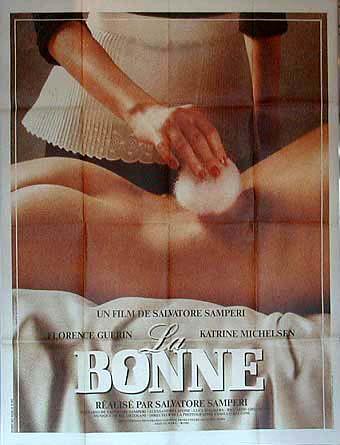[Youtube=http://www.youtube.com/watch?v=kPb1OX8bbeY]
RIP British singer-songwriter John Martyn. Over a forty-year career he released twenty studio albums and worked with the best but despite this, he has largely remained a cult figure.
My first exposure to John Martyn was via Gilles Peterson in 2000 on his first Worldwide compilation, which featured his track “Solid Air.”
Q, 1999 voted “Solid Air” as one of the best chill-out albums of all time.
Like I said, I am not really familiar with Martyn’s oeuvre, but still his death was significant to me because based on the comments of the people I know and whose tastes I trust, he was an important musician.
His sound reminds me of Richard Thompson, whom I listened to in my early twenties, and who contributed to Solid Air.
John Martyn also recorded with my hero Lee Perry and is connected to British tastemaker Joe Boyd.
First a bit on the Lee Perry link.
John Martyn as the first white artist to be signed to Island Records. Chris Blackwell, the founder of Island introduced Martyn to Lee Perry. Martyn remembers: “He asked me to come over to Jamaica and relax with him. I went and crashed at his gaff in the Strawberry Hills by Spanish Town. It was cool.”
The One World liner notes report on their collaboration:
- “The exact length of time Martyn spent in Jamaica is hazy (“I may have been there for seven weeks; it may have been seven months. I stayed rather longer than my visa extended”), but it introduced him to the cultural hotbed of the Kingston music scene, and one of its most flamboyant characters, producer and writer Rainford Hugh ‘Lee’ Perry aka The Upsetter aka Pipecock Jackson aka Scratch.
- “Yes – John Martyn!,” Perry crackled
- “Anything he’d request of me would
- be OK. John is full of fun, a simple guy;
- he’s somebody very special’
- “Chris took me down to Scratch’s house, the Black Ark,” Martyn laughs. “Chris had said that Scratch and I were using essentially the same recording techniques and we should meet. I was using rhythm boxes and Echoplex, and my man Scratch was into the same effect, a dub thing, man. It was the echo thing that invented dub for Scratch -and I just came across my version of it by accident. Mine was faster, mine was Bo Diddley. I loved working with Scratch and will do in the future, please God. I love him. There was always a naughty, rosy little twinkle in his eye.”
- This meeting led to Martyn recording at the legendary Black Ark studios, hanging out with fabled characters such as Max Romeo and Burning Spear. Martyn appeared on Spear’s Man In The Hills album, as well as on several other sessions of the day. “I did sessions with every motherfucker and nobody told me that I’d done them,” Martyn chortles. “I would hear records later and then all of a sudden a fuzz solo with a touch of phased echo would come and I would think, fuck me, that’s me! It was very cool -I didn’t mind it at all.”
“Big Muff” on Martyn’s One World album was co-written by Perry and Martyn.
On the Joe Boyd link:
Quotes from the liner notes to John Martyn’s Stormbringer!
- In January 1969 Martyn met singer Beverley Kutner at a concert supporting US singer Jackson Frank at Chelsea College of Art. Beverley was also a figure on the London folk scene and had been a friend of Paul Simon when the American singer-songwriter had lived in London. After Simon found success with Art Garfunkel, he secured her appearance at the 1967 Monterey Pop Festival. When she met John she was in the process of working on solo material for producer Joe Boyd’s Witchseason Productions and was looking for musician’s to work with. She later recounted “He was individual, rakish, all curly hair and smiles. He seemed like the ideal guy to help me out, plus of course it helped that I fancied him like mad”. John and Beverley soon became romantically involved and married in 1969. Joe Boyd had secured interest from Warner Brothers records in America in releasing an album by Beverley and it soon became apparent to Boyd that the potential of the husband and wife recording as a duo could be creatively fruitful.
- On April 16th 1969, John and Beverley Martyn entered Sound Techniques studio in Chelsea to commit four songs to tape. “Traffic Light Lady”, “I Don’t Know”, “John the Baptist” and “It’s One of Those Days” were all wonderful compositions, revealing that Boyd’s instincts in paring the duo were correct. Suitably encouraged, negotiations with Warner’s were completed and in the early Summer of 1969 he and Beverley travelled to the USA, basing themselves in the musician’s haven of Woodstock in upstate New York. The area was soon to become internationally famous thanks to the celebrated rock festival that took place later that year and also due to Bob Dylan and The Band becoming residents, recording their infamous “basement tapes” sessions there and setting the scene for The Band’s masterpiece “Music from Big Pink” (a big influence on John at that time). John and Beverley soon integrated themselves into the local musical social scene, befriending drummer Levon Helm of The Band and their near weekend neighbour, Jimi Hendrix. John would later recount “Hendrix lived virtually next door to us. He used to arrive every Thursday in a purple helicopter, stay the weekend and would leave on Monday”.
Many of Martyn’s obituaries mention his lifelong addiction to alcohol, drugs and women.
























